

SOUTHEAST
May 2010

2 of 2


SOUTHEAST
May 2010


2 of 2
Later in the spring we head down to explore the sand hills of South Carolina, stopping on the way to hike a
pretty little creek.
Soon we are accompanied by Cottonmouths, swimming along side us, or basking on snags and debris piles.
Back on dry land we encounter a turtle making his way up the steep slope of a sand hill.
Trumpet pitcher plants erupt from seeps on long gentle slopes leading down to a pond.
Sunrise over the pond, surrounded by wildflowers and water lilies.
We saw the same turkeys in the same field at the same time every day.
By now the observant reader will have noticed, among the abundance of landscape and botanical photos, a
conspicuous absence of herps. Welcome to our trip.
The weather is good, the timing seems right, and we are in places where lots of herps have been reported.
Unfortunately, we tally only a few common species, and even those are not seen frequently or in numbers.
Here then, the meager results of three full days and nights of sand hills herping:
We don’t usually see individuals of this species with such pale coloration and pattern, especially the frog on the
left, which seems to have no green at all.
Besides the red heads of these breeding males, the odd basking posture of one skink also catches our attention.
A few more common species . . .
. . . and the consolation of a sunset over the pond.
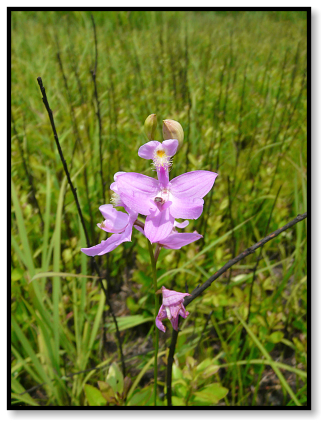
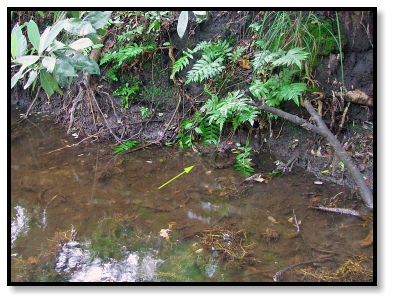
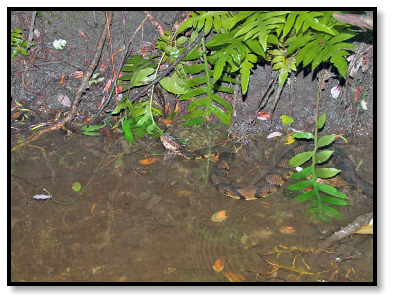
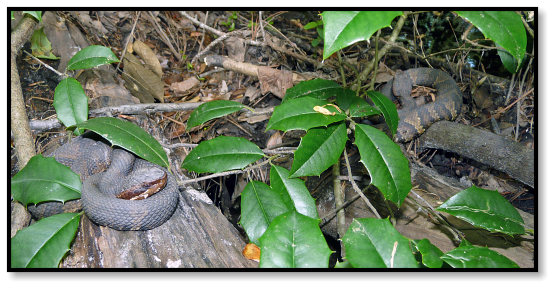
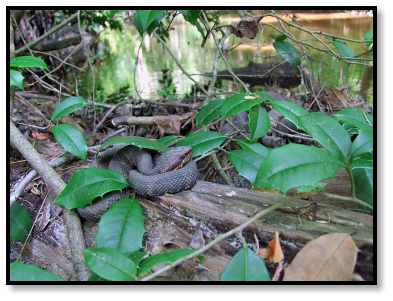
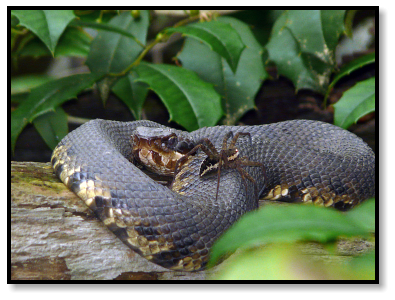
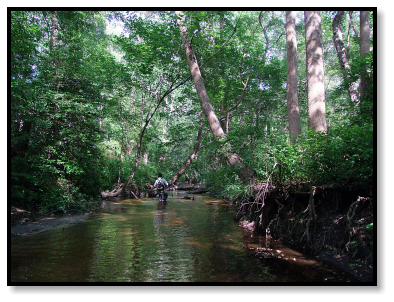
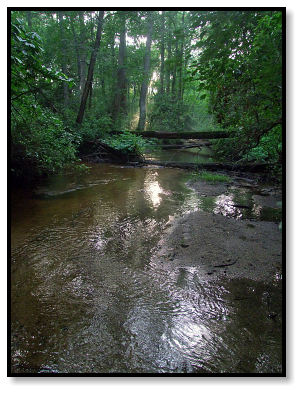
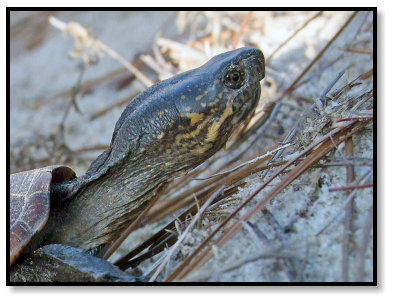
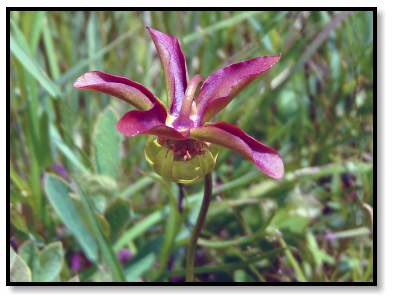
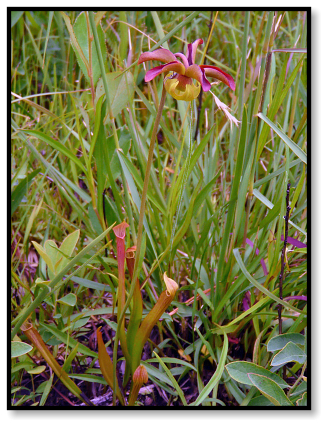
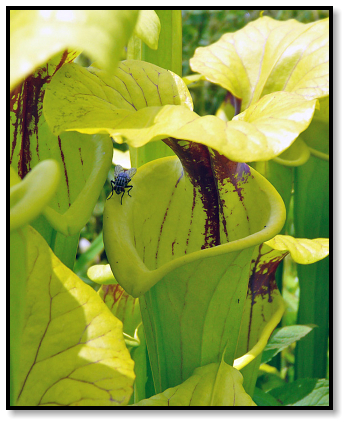
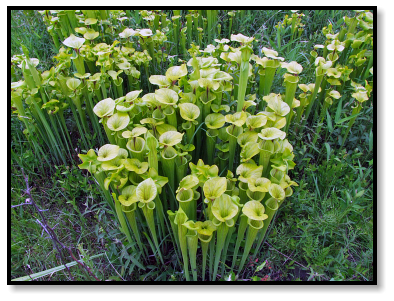
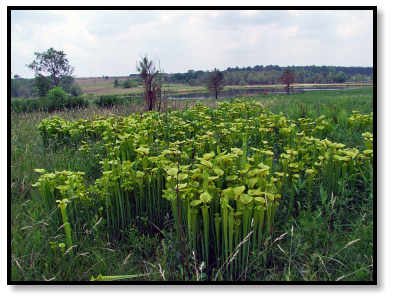
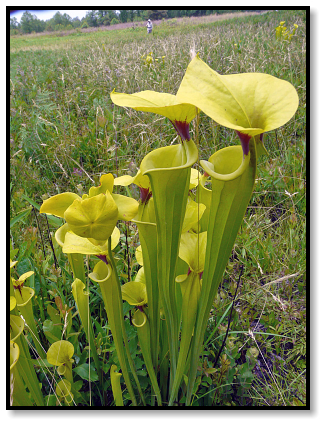
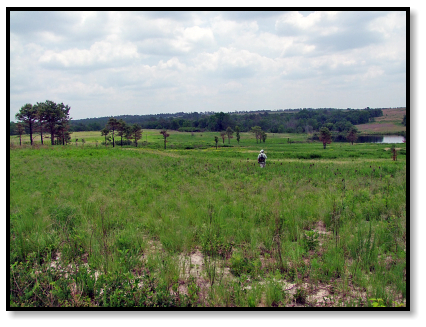
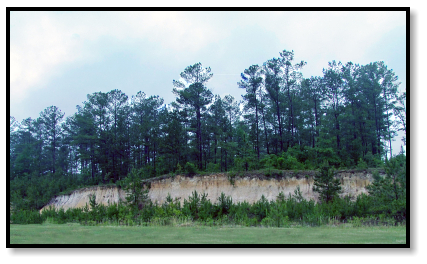
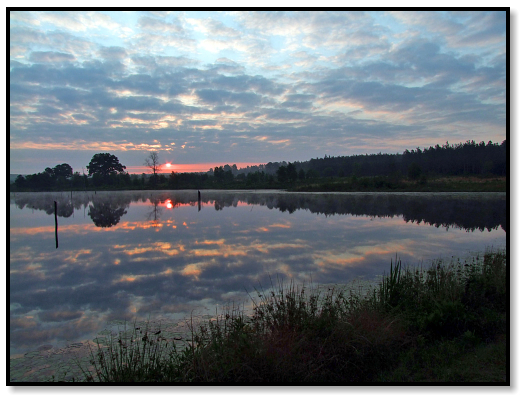
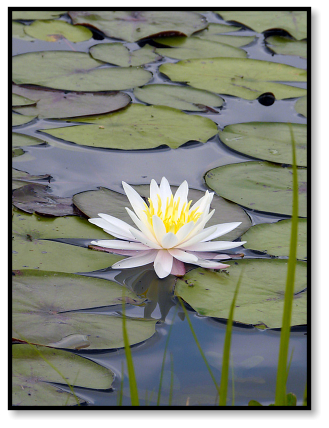
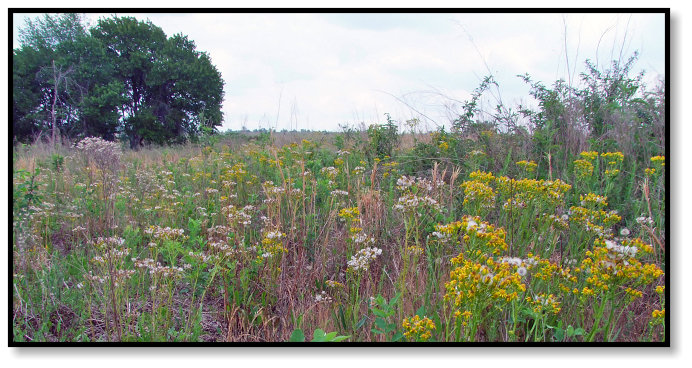
Eastern Cottonmouth (Water Moccasin)
Agkistrodon piscivorus piscivorus
Eastern Mud Turtle
Kinosternum subrubum
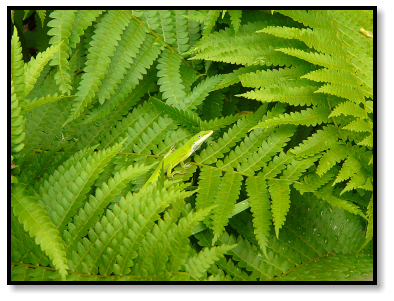
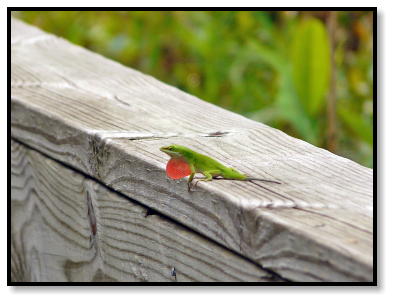
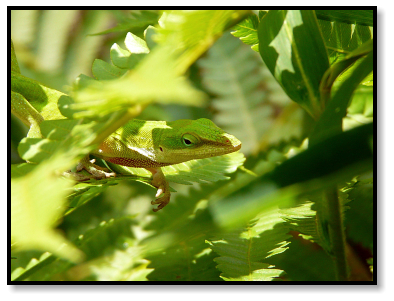
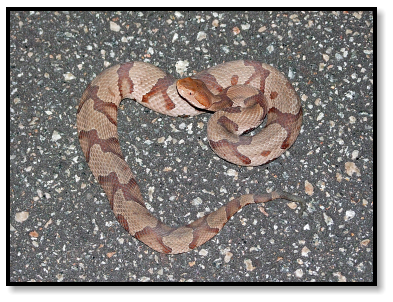
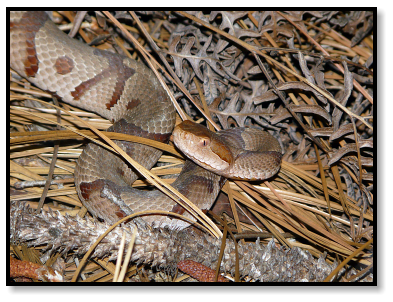
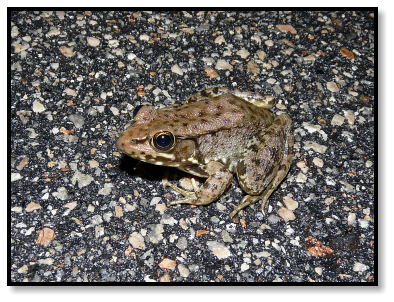
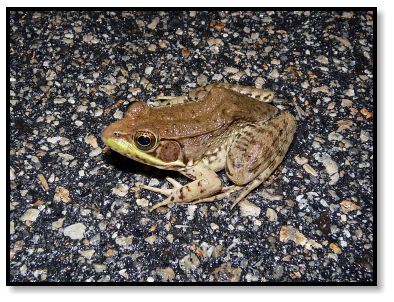
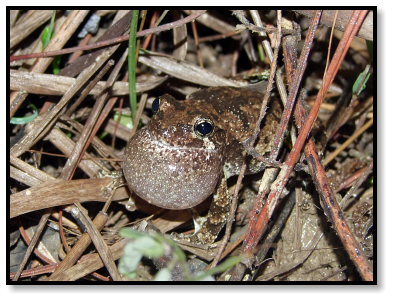
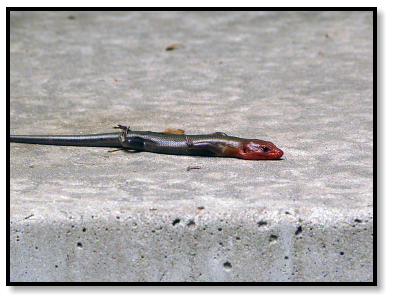
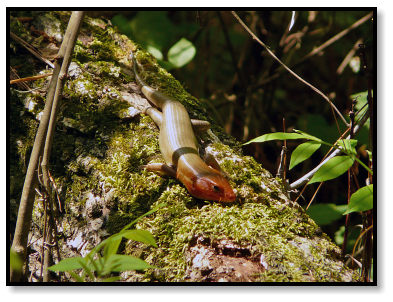
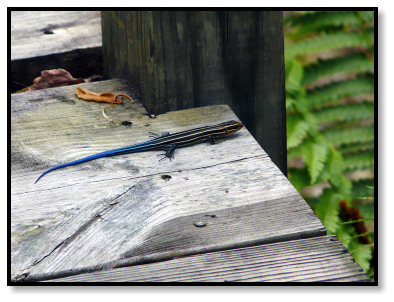
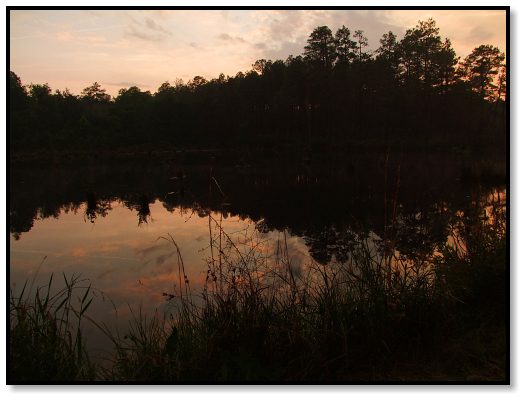
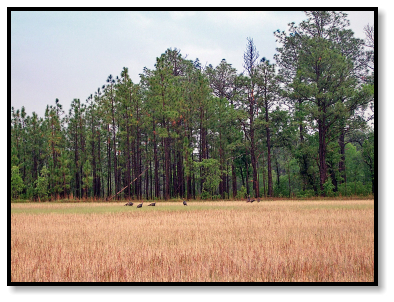
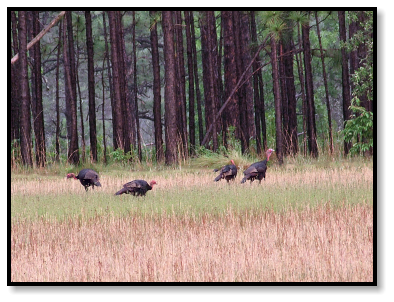
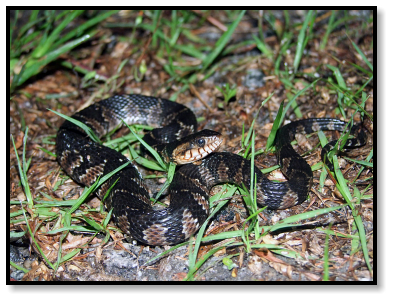
Southeastern Five-lined Skink
Eumeces inexpectatus
Green Anole
Anolis carolinensis
Green Frog
Rana clamitans
Banded Watersnake
Nerodia fasciata
Southern Gray Tree Frog
Hyla chrysocelis
Southern Copperhead
Agkistrodon contortrix contortrix







